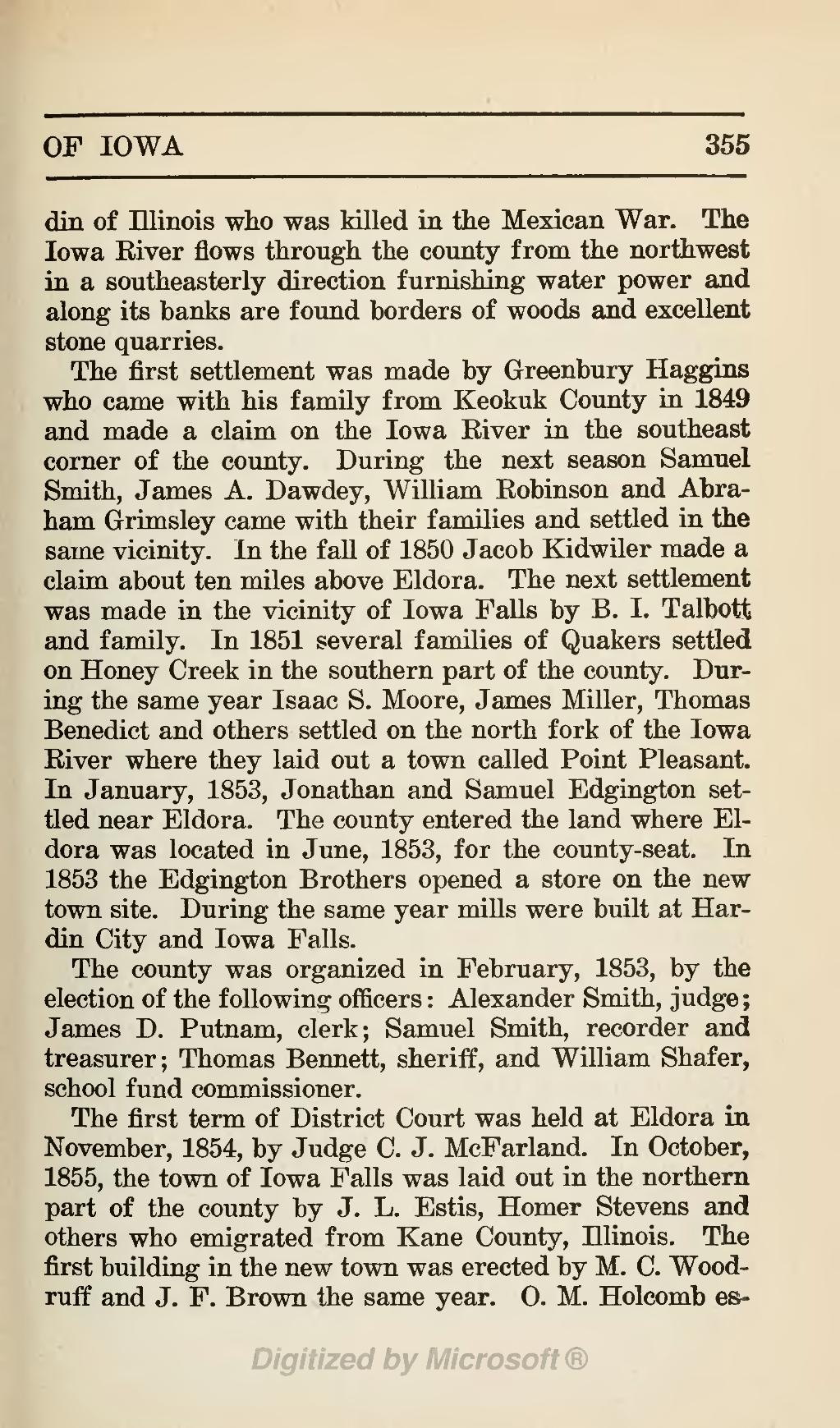din of Illinois who was killed in the Mexican War. The Iowa River flows through the county from the northwest in a southeasterly direction furnishing water power and along its banks are found borders of woods and excellent stone quarries.
The first settlement was made by Greenbury Haggins who came with his family from Keokuk County in 1849 and made a claim on the Iowa River and in the southeast corner of the county. During the next season Samuel Smith, James A. Dawdey, William Robinson and Abraham Grimsley came with their families and settled in the same vicinity. In the fall of 1850 Jacob Kidwiler made a claim about ten miles above Eldora. The next settlement was made in the vicinity of Iowa Falls by B. I. Talbott and family. In 1851 several families of Quakers settled on Honey Creek in the southern part of the county. During the same year Isaac S. Moore, James Miller, Thomas Benedict and others settled on the north fork of the Iowa River where they laid out a town called Point Pleasant. In January, 1853, Jonathan and Samuel Edgington settled near Eldora. The county entered the land where Eldora was located in June, 1853, for the county-seat. In 1853 the Edgington Brothers opened a store on the new town site. During the same year mills were built at Hardin City and Iowa Falls.
The county was organized in February, 1853, by the election of the following officers: Alexander Smith, judge; James D. Putnam, clerk; Samuel Smith, recorder and treasurer; Thomas Bennett, sheriff, and William Shafer, school fund commissioner.
The first term of District Court was held at Eldora in November, 1854, by Judge C. J. McFarland. In October, 1855, the town of Iowa Falls was laid out in the northern part of the county by J. L. Estis, Homer Stevens and others who emigrated from Kane County, Illinois. The first building in the new town was erected by M. C. Woodruff and J. F. Brown the same year. O. M. Holcomb es-
